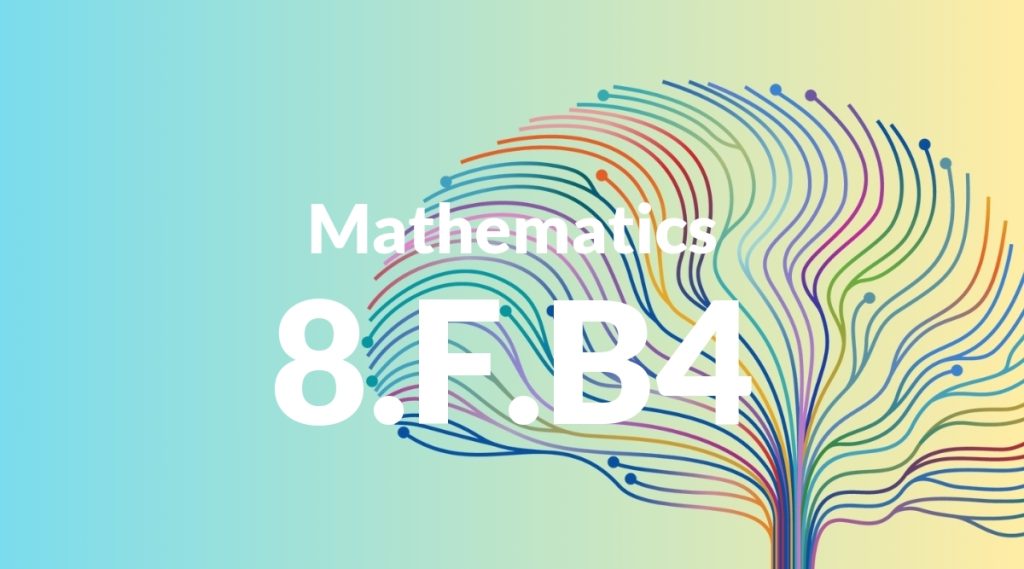Standard: 8.F.B4 – Construct a function to model a linear relationship between two quantities. Determine the rate of change and initial value of the function from a description of a relationship or from two (x, y) values, including reading these from a table or from a graph. Interpret the rate of change and initial value of a linear function in terms of the situation it models, and in terms of its graph or a table of values.
Grade level: Grade 8
Subject: Mathematics
Domain: Functions
Teacher Overview
This standard focuses on helping students understand and construct linear functions, which are fundamental in describing relationships between two quantities. Mastering this concept is crucial, as it lays the groundwork for more advanced algebraic concepts and real-world applications. Ensure students are comfortable with basic algebra, including solving equations and graphing points on a coordinate plane. They should also be able to interpret simple graphs.
Students will move on to more complex functions, including quadratic and exponential functions, and will be able to analyze and interpret non-linear relationships in high school mathematics.
Common Misconception 1
One common misconception is that the rate of change (slope) is the same as the y-intercept. This is incorrect because the slope represents the change in y for a unit change in x, while the y-intercept is the value of y when x is zero.
Intervention 1
Use graphing tools and visual aids to differentiate between slope and y-intercept. Provide guided practice with feedback to help students understand the distinct roles of these components in a linear function.
Common Misconception 2
Another common misconception is that the initial value can be found by looking at any point on the graph. This is incorrect because the initial value is specifically the y-value when x is zero.
Intervention 2
Teach students to identify the y-intercept by setting x to zero. Use multiple examples and practice problems to reinforce this concept.
Prerequisite Knowledge
Students should understand basic algebraic concepts, including variables and solving simple equations. They should also be familiar with graphing points on a coordinate plane and interpreting basic graphs.
Subsequent Knowledge
After mastering this standard, students will be able to explore more complex functions, including quadratic and exponential functions. They will also be prepared to analyze and interpret non-linear relationships in high school mathematics.
Instructional Activities
- Graphing linear functions from given equations
- Interpreting real-world scenarios to create linear models
- Using tables of values to derive linear equations
- Interactive activities with graphing calculators or software




